Building on its beginnings in Melbourne Design Week, A New Normal is a new exhibition presented by Vivid Ideas Sydney at Powerhouse Ultimo.

May 29th, 2024
What might a self-sufficient city look like? How might it function and, most importantly, form part of the approach to tackling the climate crisis? These are some of the questions at the centre of a three-week exhibition at Powerhouse Ultimo. A New Normal, presented as part of Vivid Ideas Sydney, brings together more than 20 concepts aimed at providing some near-term solutions that could transform Sydney in terms of energy, water and other consumption. As “part-pavilion, part-community space,” the exhibition is led by Jess Miller, former Councillor and Deputy Lord Mayor of Sydney, with projects a number of design practitioners in the city.
One of the notable projects featuring in A New Normal is focused on renewable energy generation and storage in apartments. Electrify Wolli Creek x Solar Commons is a collaboration between architect Lucy Humphrey, Solar Citizens and GHD. It begins by asking: How can we electrify everything – from individual buildings to entire precincts – in an equitable way? How can we maximise benefits for communities, contribute positively to local ecosystems, create successful partnerships, and make urban spaces more regenerative?






While the Electrify Wolli Creek part is based on community-driven change at a site in Sydney comprising 1,920 high-rise apartments, Solar Commons is a clean energy, flexible, community infrastructure that combines green roofs or walls with a solar canopy backed up with battery storage.
“The question for A New Normal,” explains Lucy Humphrey, “was really about where to put the solar panels. One of the challenges if you live in an apartment building is that, from a numbers point of view, there’s not enough roof space to provide solar.” While mundane in one sense, it’s this kind of practical insight that is driving the exhibition – it’s about realistic interventions rather than disconnected speculation.




“We started to think about it not just as a blanket of solar panels which everyone is used to seeing, but as something that could be more creative – that could actually create a space like a solar garden or something that could be presented as an artwork,” adds Humphrey, who also leads Studio Ecology, a climate-focused architecture practice.
“We have been looking at a project that is very adaptable and scalable. The idea is to try to combine a community space, meeting space, garden, places for seating and other amenities along with the solar,” says Humphrey.
Related: Discussions at the 2024 Architecture Conference

Heidi Lee Douglas, CEO of Solar Citizens, comments: “The Solar Commons has been designed as a clean energy solution for the Wolli Creek community, NSW’s third-most densely populated suburb where 98 per cent of the residents live in a high-rise apartments. We were inspired by the community solar garden model and recent research showing how solar green roofs can increase biodiversity and reduce urban heat. The Solar Commons is exactly what our cities need – a community-owned space that delivers financial, social, environmental and health benefits to the local residents and urban ecosystem.”
Other collaborative projects and their prototypes include The ‘forever car’ by Neeson Murcutt Neille with KPMG, Electro Gusto, TAFE NSW and RoEV; The circular shopping centre by Heleana Genaus with Second Edition, Scentre Group and UTS; and The Indigenous night garden by Clarence Stocklee with Wildflower and NGINA.

What perhaps unites them all at this exhibition is a focus on the practical application of design innovation that nevertheless quite radical in its thinking (hence the title – both new and normal). The prototypes and projects involve things that people can start doing today. The lines between architecture, art, engineering and even civil society are blurred by way of a direct address to the climate crises urging the necessity and efficacy of self-sufficiency.
Humphrey is also keen to emphasise accessibility and equity: “The focus is on people. It’s a new challenge for everyone, and A New Normal is trying to normalise it and help [people to] understand their options. These are all positive changes, and they’re really positive and inspiring projects. I think the exhibition is about getting people excited – to see these changes as a positive opportunity, not a burden.”
A New Normal is at Powerhouse Ultimo, Sydney from May 24th to June 15th, 2024.
Lucy Humphrey Studio
lucyhumphrey.com
Studio Ecology
studio-ecology.com
Solar Citizens
solarcitizens.org.au
New Normal
normalise.it
Finding Infinity
findinginfinity.com
Photography
Nic Walker (except for images from previous Melbourne Design Week below)




INDESIGN is on instagram
Follow @indesignlive
A searchable and comprehensive guide for specifying leading products and their suppliers
Keep up to date with the latest and greatest from our industry BFF's!
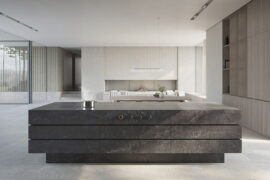
For those who appreciate form as much as function, Gaggenau’s latest induction innovation delivers sculpted precision and effortless flexibility, disappearing seamlessly into the surface when not in use.

For a closer look behind the creative process, watch this video interview with Sebastian Nash, where he explores the making of King Living’s textile range – from fibre choices to design intent.
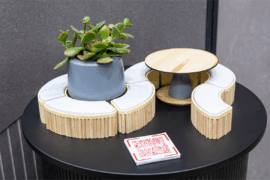
From the spark of an idea on the page to the launch of new pieces in a showroom is a journey every aspiring industrial and furnishing designer imagines making.
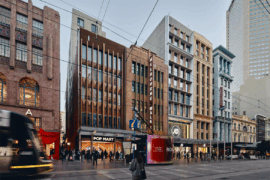
Merging two hotel identities in one landmark development, Hotel Indigo and Holiday Inn Little Collins capture the spirit of Melbourne through Buchan’s narrative-driven design – elevated by GROHE’s signature craftsmanship.
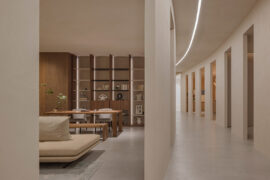
The Simple Living Passage marks the final project in the Simple World series by Jenchieh Hung + Kulthida Songkittipakdee of HAS design and research, transforming a retail walkway in Hefei into a reflective public space shaped by timber and movement.
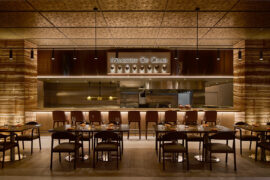
After more than two decades at Architects EAT, Eid Goh launches AIR, a new Melbourne-based studio focused on adaptive reuse, hospitality and human-centred design across commercial and civic projects.
The internet never sleeps! Here's the stuff you might have missed

Merging two hotel identities in one landmark development, Hotel Indigo and Holiday Inn Little Collins capture the spirit of Melbourne through Buchan’s narrative-driven design – elevated by GROHE’s signature craftsmanship.
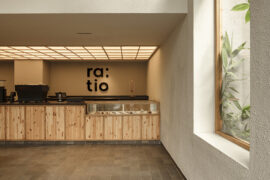
Ra:tio café blends calm interiors and lush outdoor spaces through VAL Atelier and The Pinewood Studio’s refined, contemporary design.